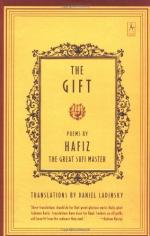
|
Preface and Introduction
1. Daniel Ladinsky describes Hafiz as a poet who has inspired some of the worlds greatest _______.
(a) Playwrights.
(b) Writers.
(c) Poets.
(d) Musicians.
2. Ladinsky suggests that Hafiz is on the same level as other luminaries including all of the following except _______.
(a) Ramakrishna.
(b) Francis of Assisi.
(c) Rumi.
(d) Lalla.
3. Hafiz is known for his attempts to free people through intimacy with the divine from the control of ______.
(a) Government.
(b) Economics.
(c) Religion.
(d) Ethics.
4. According to Ladinsky, Hafiz wrote between _______ poems, some of which were destroyed by fundamentalist Islamic leaders.
(a) 50-70.
(b) 500-700.
(c) 300-500.
(d) 30-50.
5. According to the Islamic fundamentalist leaders, it was ______ to claim intimacy with the divine.
(a) Devout.
(b) Blasphemy.
(c) Rhetoric.
(d) Standard practice.
6. Hafiz believed that God was too powerful and benevolent to resort to ______ and condemnation to elicit devotion from his children.
(a) Supplication.
(b) Consternation.
(c) Propagation.
(d) Intimidation.
7. According to Ladinksy, Hafiz's poetry has often been used in an ______ fashion, like astrology or the tarot.
(a) Columnar.
(b) Oracular.
(c) Vernacular.
(d) Vestibular.
(read all 180 Multiple Choice Questions and Answers)
|
This section contains 4,181 words (approx. 14 pages at 300 words per page) |

|




